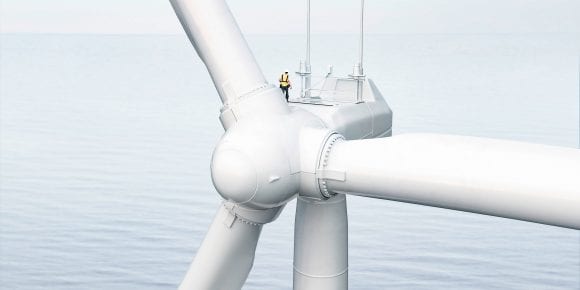Dip your toe in Sustainable Investing
Interest in Sustainable Investing (SI) is rising, especially for High Net Worth Individuals, affluent Millennials and HENRYs (High Earners, Not Rich Yet).
Some 70% of surveyed investors expressed interest in SI solutions1. How to sort through all the data about environmental, social and governance (ESG) criteria? Which sources to trust? What kinds of assets? How to truly make a difference?
While it may seem overwhelming, the good news is that sustainable investing is, in many ways, just investing. We believe you can build a personalized portfolio that reflects your values and doesn’t sacrifice on returns. That’s because sustainable assets are highly diversified and tend to be high in quality2.

A growing number of consumers are voting with their pocketbooks in favor of sustainability, choosing products and services that respect the environment, society and good corporate governance as witnessed by the fact that sustainability-marketed products accounted for half the growth in sales of consumer packaged goods over the five years to 20183. Young people with robust incomes—including Millennials, HENRYs (High-Earning, Not Rich Yet) and Gen Z—might also want to invest their money in sustainable assets. But where to start?
Think about the environmental, social and governance (ESG) issues that companies might face before you decide on your investments. You can also choose assets that might help solve some of the most pressing challenges in the world, especially in the realms of climate change, water scarcity, pollution and waste, people, products and services and governance. It’s called sustainable investing.
"I think it’s common sense,” says Michaela Seimen Howat, Sustainable Investing Strategist, Chief Investment Office at UBS. “Sustainable investing aims for the same thing as traditional investing: returns. You want to look at every possible factor that can impact returns. Today, it is estimated that 80% of companies’ value is in intangibles4,” like brand and reputation—the very things that are negatively affected by scandals around environmental practices, workplace and supply chain or bad accounting. “Sustainable investing provides additional ways to capture and assess this information to improve investment analysis.”
Know your objectives
Investors don’t need to know everything about sustainability or about investing. What they do need to know are their sustainability objectives, how much risk they want to take and which asset classes they want to invest in, Ms. Seimen-Howat says. The universe of sustainable asset classes continues to expand, currently dominated by equities, followed by fixed income, like green bonds, and with alternatives like private equity, hedge funds and structured products becoming increasingly important. You can construct a portfolio of individual stocks or bonds or buy sustainable mutual funds or exchange-traded funds.
Engagement strategies are particularly interesting, because fund managers directly engage the management of companies by joining their boards and/or using proxy voting to steer them toward more sustainable practices and open a dialogue for further progress. Choosing any of these options would enable you to dip a toe into sustainable investing, without significantly altering your existing portfolio.
Sustainable investing uses different strategies to achieve investors’ goals. Exclusion is the oldest strategy—withholding investment from companies whose businesses an investor is strongly opposed to. Integration uses ownership as leverage to signal to companies that they are doing well or need to continue to improve. Impact investing is the most hands-on approach, giving investors “the possibility to measure and verify the impact achieved with every invested dollar,” Ms. Seimen-Howat says.
No sacrifice on returns
Based on our research and looking at ESG returns across the board, there are now enough asset classes and strategies to create diversified sustainable investment portfolios that produce comparable returns to conventional investing. “There’s absolutely no sacrifice on returns with sustainable investing,” Ms. Seimen-Howat says. Much of the reason comes down to risk management—companies that score well on ESG tend to be better run and pay attention to the other details of their businesses, lowering their tail-risk. “They’re quality companies,” she says.
We believe high asset quality and reduced volatility explain why sustainable strategies have reached over $30 trillion. “In the long run, it can help protect a portfolio,” she says.
The wealth of ESG data, however, can lead individual investors astray if they try to go alone. “There are more things that feed into the evaluation,” Ms. Seimen-Howat says. “It’s a mix of financials plus ESG plus business expertise. Which asset is better than another is not always a binary black and white.” Investors in the near future won’t even talk about sustainable investing, Ms. Seimen-Howat predicts. “There won’t be a difference between sustainable and traditional investing. Everything will be sustainable.”




